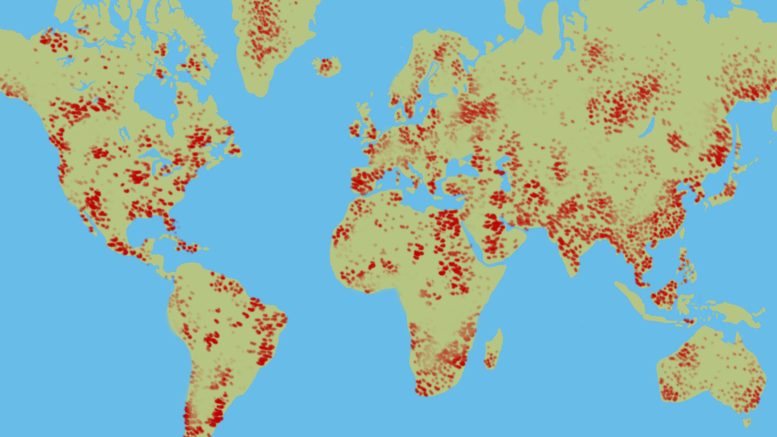On March 11, 2020, the World Health Organization declared COVID-19 a pandemic.
With over 761 million reported cases and a series of nation-wide lockdowns in the past three years, the trajectory of the COVID-19 pandemic has prompted researchers to attempt to determine when and how it will end.
Among these researchers is University of Oxford professor of global history of medicine Erica Charters, whose work examines the relationship between disease and society.
The University of Oxford’s multidisciplinary project titled “How Epidemics End,” led by Charters, examines past epidemics and how societies determine when an epidemic ends.
On March 20, Charters spoke at the University of Manitoba’s 2022-23 Robin Connor Lectureship in the History and Philosophy of Science, sharing some of the project’s findings.
“The project takes a kind of macro, or what I might call, a bird’s eye view of epidemics and of research on epidemics across time and across places, as well as across disciplines,” she said.
According to Charters, epidemics have three types of endings — the medical end of disease, the political end that is characterized by the end of regulations and crisis and the social end, when things return to normal.
These three distinct ends overlap one another and may conflict with each other, depending on what factors are examined and deemed most important.
“Whereas the declaration of an outbreak of an epidemic suggests a neatly defined period of emergency, the end process is a very messy process,” Charters explained.
While researching past epidemics, Charters found that the way epidemics end is not often focused on. She explained that epidemics across history have followed an “arc of social drama,” eventually “drifting towards closure.”
As an example, she described ancient historian Thucydides’s account of the 430 BCE plague of Athens.
After recounting the symptoms and deaths, as well as the economic, social and political disruption caused by the plague, the disease ceases to appear in the historian’s narrative.
In other words, its disappearance from the text showed that the epidemic had reached its end.
“In many ways, this silence is fundamental to the very definition of the end of an epidemic,” Charters said. “After all, an epidemic is a crisis, not only a biological crisis, but also a social and political crisis during which time society’s attention is focused on this urgent problem of disease and the drama of its unfolding.”
To Charters, the end of an epidemic is when society’s attention is redirected elsewhere and “no longer focused on the crisis of disease.”
Charters pointed out that most epidemics in the past, from the 19th century cholera epidemics to the 2009 H1N1 influenza pandemic, were declared to have ended despite continuing disease.
She added that Influenza A is a good example of a continuing illness that grows to become an epidemic before falling to endemic, or “acceptable,” levels of disease.
She explained that because different groups and interests have different ideas of what an “acceptable” level of disease is, “the end process is not only about pathogens, but most fundamentally about what to measure.”
Charters noted that the end period of epidemics reveals how dependent we are on information and data, but pointed out that “it also raises profound questions as to what we measure and what we don’t measure when collecting this information, as well as who collects this information and how that shapes our understanding of the outbreak, as well as the end.”
Another concept that plays a role in the end process is time, as lessons learned from previous epidemics are often applied to the future.
“Re-envisioning the future is a way to analyze and understand the past epidemic, and thereby, as part of the end process, we attempt to restore human agency into society’s relationship with disease,” Charters said.
Across history, most pandemics have ended in different places at different times.
For instance, the second plague pandemic blended into the third plague pandemic in many parts of the world, despite the disease diminishing in Europe.
Charters explained that this demonstrates how “depending on what is measured and what is used as evidence, the end of an epidemic can stretch in many different directions.”
She highlighted that HIV/AIDS is not considered an epidemic in the Global North, as it has become manageable due to medical breakthroughs, but that for those around the world living in unstable political and economic conditions without reliable access to care, the epidemic is not over.
Overall, Charters described an epidemic’s end as asynchronous and occurring when society reconnects.
Charters said that the complicated ending process of an epidemic is a reminder that epidemics are also moral crises.
“They test the limits of social cohesion and trust,” she said.
Charters explained that one of the things historians and anthropologists are drawn to when studying disease is the “ingenious human ability to go back and retrospectively reinterpret the epidemic.”
“We understand disease differently at the end stage,” Charters said. “If in the outbreak stage we can channel that end-stage understanding of disease, it might help us to reframe and rethink our long-term approach to managing disease.”
She added that examining epidemic endings enables one to see epidemics as a continuous process.
“The messy process of ending demonstrates that epidemics should not be visualized as a great series of individual and self-contained events that disrupt society’s natural trajectory, but instead as continuous waves that interact both with one another and with society,” she said.




